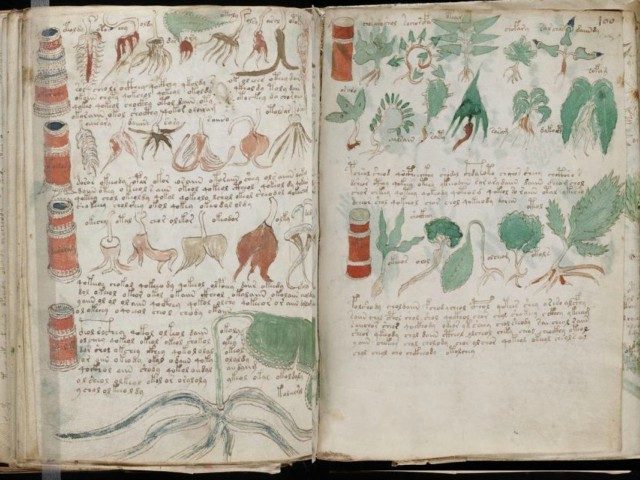Artificial intelligence has discovered the language of the 600-year-old coded Voynich manuscript, a famously mysterious book which has yet to be deciphered since its discovery over a hundred years ago.
As reported by Gizmodo, “Since its discovery over a hundred years ago, the 240-page Voynich manuscript, filled with seemingly coded language and inscrutable illustrations, has confounded linguists and cryptographers.”
“The document is written in an unknown script that encodes an unknown language—a double-whammy of unknowns that has, until this point, been impossible to interpret. The Voynich manuscript contains hundreds of fragile pages, some missing, with hand-written text going from left to right,” they explained. “Most pages are adorned with illustrations of diagrams, including plants, nude figures, and astronomical symbols. But as for the meaning of the text—nothing. No clue.”
However, artificial intelligence, with the help of researchers in Canada, has discovered what language the manuscript was likely written in– Hebrew.
The University of Alberta’s Greg Kondrak and graduate student Bradley Hauer discovered that the manuscript “appears to be the Hebrew language, and with letters arranged in a fixed pattern.”
“The first step was to figure out the language of the ciphered text. To that end, an AI studied the text of the ‘Universal Declaration of Human Rights’ as it was written in 380 different languages, looking for patterns,” Gizmodo reported. “Following this training, the AI analyzed the Voynich gibberish, concluding with a high rate of certainty that the text was written in encoded Hebrew.”
“For the second step, the researchers entertained a hypothesis proposed by previous researchers—that the script was created with alphagrams, that is, words in which text has been replaced by an alphabetically ordered anagram (For example, an alphagram of GIZMODO would read DGIMOOZ),” they continued. “Armed with the knowledge that text was originally coded from Hebrew, the researchers devised an algorithm that could take these anagrams and create real Hebrew words. For the final step, the researchers deciphered the opening phrase of the manuscript, and presented it to colleague Moshe Koppel, a computer scientist and native Hebrew speaker. Koppel said it didn’t form a coherent sentence in Hebrew.”
In a statement, Kondrak claimed the discovery “was surprising,” adding, “And just saying ‘this is Hebrew’ is the first step. The next step is how do we decipher it.”
“It turned out that over 80 percent of the words were in a Hebrew dictionary, but we didn’t know if they made sense together,” Kondrak proclaimed.
Last year, artificial intelligence was able to predict whether relationships would last based on how the partners spoke to each other, while in October, it was reported that Google’s artificial intelligence could make better machine-learning code than the humans who created it.
“I fear that A.I. may replace humans altogether. If people design computer viruses, someone will design A.I. that improves and replicates itself,” said Professor Stephen Hawking in an interview last year. “This will be a new form of life that outperforms humans.”
Charlie Nash is a reporter for Breitbart Tech. You can follow him on Twitter @MrNashington, or like his page at Facebook.

COMMENTS
Please let us know if you're having issues with commenting.